Evil Genius: Constructing Wagner as Moral Pariah, Part 1
PART 1
In the 2010 feature-length documentary Wagner and Me the British celebrity Stephen Fry explored his love affair with the music of Richard Wagner. Fry, who is Jewish, homosexual, and bipolar, enjoys a multi-pronged “victim” status that has made his identity politics credentials the aesthetic equivalent of a nuclear warhead. The inevitable consequence of this (and his Leftist politics) is his constant presence in the British media. Indeed, Stephen Fry is possibly the most overrated and overexposed individual in the history of British entertainment, and has benefited enormously from the intellectual elite’s construction of Jewish genius to the point where he is routinely hailed in sections of this fawning media as a “genius” and a “national treasure.”
As well as providing another celebrity vehicle for the overrated Stephen Fry, Wagner and Me offered another platform for exploring the life, work and thinking of one of the world’s most famous “anti-Semites.” While acknowledging Wagner’s undoubted genius, Fry reminds us in portentous tones that “a shadow falls across the sublime music. It’s not only the fact that it was later appropriated by Hitler which makes some people think of Wagner’s art as tainted. It’s also because Wagner himself was outspokenly anti-Semitic.”
Wagner and Me is just one in a long line of books and documentaries that have explored Wagner’s putative role as the spiritual and intellectual godfather to Hitler. In the Jewish-dominated cultural milieu of the contemporary West this meme has taken on such a life that Wagner’s name is seldom mentioned today without the obligatory disclaimer that, while admittedly (and unfortunately) a musical genius, his reputation is forever sullied by his standing as a morally loathsome anti-Semite. A consequence of this, notes William Berger, is that for many people, Wagner “has become symbolic of everything evil in the world.”
Richard Wagner was a one-man artistic and intellectual movement whose shadow fell across all of his contemporaries and most of his successors. Other composers had influence; Wagner had a way of thinking named after him. Indeed, a significant biographical feature of most of the composers that followed Wagner was how they grappled with his legacy. Some imitated him, some rejected him, and some (like Hugo Wolf) were almost paralysed by the immensity of his achievement. Wagner was a deeply polarizing figure in his lifetime, and no other composer has provoked such extreme antipathy or adulation. Yet even the anti-Wagnerites had to acknowledge the enormity of his achievement, and his most fanatical detractors (a great many of them Jewish) have reluctantly agreed with Tchaikovsky, who wrote of the Ring: “Whatever one might think of Wagner’s titanic work, no one can deny the monumental nature of the task he set himself, and which he has fulfilled; nor the heroic inner strength needed to complete the task. It was truly one of the greatest artistic endeavors which the human mind has ever conceived.”
As we approach next year’s bicentenary of Wagner’s birth, and the 130th anniversary of his death, the composer retains a cultural prominence that surpasses any of his contemporaries. The excellence of his music has ensured that its popularity has never waned, and Wagner is still well represented on recordings, on radio, and in the theater. Wealthy Wagner devotees travel the world in pursuit of live performances of his fifteen-hour, four-night opera cycle, Der Ring des Nibelungen. Every year thousands still make a pilgrimage to the small Bavarian town of Bayreuth where in 1876 he inaugurated a festival devoted to his own music. The appeal of Wagner’s music, libretti and stagecraft has ensured his music dramas remain useful to opera companies around the world as a reliable income source, even in straitened economic times.
It is, however, Wagner’s standing as “a notorious anti-Semite,” and the intellectual establishment’s obsession with him on this basis, that has increasingly shaped his image in the popular consciousness. Wagner’s reputation is now so thoroughly tainted that one almost never encounters a serious examination of his ideas. As Adrian Mourby notes: “The notion that artists don’t have to be as beautiful as the works they create is a commonplace now – except in the case of Wagner. Judaism in Music is what has made him the unforgivable exception.”
JUDAISM IN MUSIC
Kevin MacDonald observes in Separation and its Discontents that Richard Wagner is perhaps the best known intellectual who focused on the Jewish domination of culture. Wagner first expounded on what he saw as the pernicious Jewish influence on German art and culture in his 1850 tract Das Judenthum in der Musik (usually translated as Judaism in Music or Jewishness in Music), which was published under pseudonym in 1850. Wagner’s essay took up the theme of a previous article by Theodor Uhlig in the Neue Zeitschrift für Musik that was critical of the “Hebraic art taste” that Uhlig thought was manifest in Giacomo Meyerbeer’s grand opera Le prophète.
Wagner attempted in his essay to account for the “popular dislike of the Jewish nature,” and “the involuntary repellence possessed for us by the nature and personality of the Jews.” He concludes that Germans instinctively disliked Jews due to their alien appearance, speech and behavior, noting that “with all our speaking and writing in favor of the Jews’ emancipation, we always felt instinctively repelled by any actual, operative contact with them.” Wagner here simply stated an obvious fact: that Germans were ethnocentric like all other racial and ethnic groups, and this colored their interactions with a fiercely competitive, deeply ethnocentric, and hostile outgroup residing among them.
Wagner also argued that Jewish musicians were only capable of producing music that was shallow and artificial, because they had no connection to the genuine spirit of the German people. He asserts that: “So long as the separate art of music had a real organic life-need in it down to the epochs of Mozart and Beethoven, there was nowhere to be found a Jewish composer. … Only when a body’s inner death is manifest, do outside elements win the power of lodgment in it — yet merely to destroy it.” Jews had not fully assimilated into German culture, so they did not identify with and merge themselves into the deepest layers of that culture, including its religious and ethnic influences — the Volksgeist. According to Wagner, “our whole European art and civilization … remained to the Jew a foreign tongue.” The Jews “through an intercourse of two millennia with European nations” had never fully abandoned the posture of “a cold, nay more, a hostile looker-on.”
The same thesis was advanced by Zionist intellectuals like Ahad Ha’Am (the pseudonym of Asher Ginsburg). MacDonald notes that both Wagner and Ginsburg “developed the idea that Jews could not have their own artistic spirit because they failed to identify completely with the surrounding culture.” (p. 184) In Wagner’s view, higher culture springs ultimately from folk culture. In the absence of Jewish influence, German music would once again reflect the deeper layers of German folk culture. For Wagner “Judaic works of music often produce on us the impression as though a poem of Goethe’s, for instance, were being rendered in the Jewish jargon. … Just as words and constructions are hurled together in this jargon with wondrous inexpressiveness, so does the Jewish musician hurl together the diverse forms and styles of every age and every master. Packed side by side, we find the formal idiosyncrasies of all the schools, in motleyest chaos.”
This observation has been roundly condemned by Jewish commentators, and yet the Jewish music commentator David Rodwin, while labelling Wagner’s essay “a vile anti-Semitic screed”, admits there is substantial truth in the “aesthetic eclecticism” that Wagner identified as a unifying feature of Jewish composers. Jacob Katz likewise acknowledged that “Jewish qualities may quite naturally appear – for better or for worse – in artistic creations of Jews, even of those who have joined non-Jewish culture. It would therefore be preposterous to dismiss categorically all observations from the mouths of anti-Semites as prejudicial misconceptions.” (p. 98)
Drawing on the thesis of Heinrich Laube’s book Struensee, Wagner held Jews to be responsible for the introduction of hyper-
commercialized values into German art. In February of 1848, at the funeral of Wagner’s mother, Laube commiserated with his friend Wagner, equating the sadness of the hour with their mutual despair at the state of German art and culture, noting that “On the way to the station, we discussed the unbearable burden that seemed to us to lie like a dead weight on every noble effort made to resist the tendency of the time to sink into utter worthlessness.” As the preface to Struensee makes clear, this “worthlessness” consisted in the flowering of Jewish values. Wagner’s only remedy was to “plunge dully and coldly into the only thing that could cheer me and warm me, the working out of my Lohengrin and my studies of German antiquity.” (p. 360) Regarding the Jewish tendency to convert art into a form of commerce, Wagner writes:
[All] is turned to money by the Jew. Who thinks of noticing that the guileless looking scrap of paper is slimy with the blood of countless generations? What the heroes of the arts… have invented… from two millennia of misery, today the Jew converts into an art-bazaar … We have no need first to substantiate the Jewification [Verjudung] of modern art. It springs to the eye and thrusts upon the senses. … But if emancipation from the yoke of Judaism appears to us the greatest of necessities, we must hold it crucial above all to assemble our forces for this war of liberation. But we shall never gain these forces by merely defining the phenomenon [of Judaism] in an abstract way. This will be done only by accurately knowing the nature of that involuntary feeling of ours which utters itself as an instinctive repugnance against the Jew’s prime essence. … Then we can rout the demon from the field … where he has sheltered under a twilit darkness … which we good-natured humanists ourselves have conferred on him.
For Wagner, Judaism was the embodiment of the bourgeois money-egoist spirit. As he later confessed to Liszt: “I felt a long-repressed hatred for this Jewish money-world, and this hatred is as necessary to my nature as gall is to blood. An opportunity arose when their damnable scribbling annoyed me most, and so I broke forth at last.” In Judaism in Music Wagner finds the plea for Jewish emancipation to be “more than commonly naïve, since we see ourselves rather in the position of fighting for emancipation from the Jews. The Jew is in fact, in the current state of the world, already more than emancipated. He rules.”
Interestingly, despite his stated views, Wagner twice refused to sign the “Anti-Semites Petition” of 1880 (presented to Bismarck) which complained about the very economic domination that so troubled him. The Petition itself stated:
Wherever Christian and Jew enter into social relations, we see the Jew as master, the indigenous Christian population in a subservient position. The Jew takes part only to a negligible extent in the heavy labor of the great mass of the nation. But the fruits of his [the German’s] labor are reaped mainly by the Jew. By far the largest part of the capital which national labor produces is in Jewish hands. … Not only do the proudest palaces of our large cities belong to Jewish masters whose fathers and grandfathers, huckstering and peddling, crossed the frontiers into our fatherland, but rural holdings too, that most significant preservative basis of our political structure fall more and more into the hands of the Jews. … What we strive for is solely the emancipation of the German Volk from a form of alien domination which it cannot endure for any length of time. (p. 52)
For Roger Scruton, it is in Wagner’s determination to use his art to escape from this commercialized world — a world where everything is for sale, “where value is price and price is value,” and where entertainment is considered more important than art — that is central to his genius. Wagner escaped “to a garret, high above the market place” in conscious reaction against the sentimentality and disingenuousness of the art and music at his time.
The operas of Wagner attempt to dignify the human being in something like the way he might be dignified by an uncorrupted common culture. Acutely conscious of the death of God, Wagner proposed man as his own redeemer and art as a transfiguring rite of passage to a higher world. The suggestion is visionary, and its impact on modern culture so great that the shockwaves are still overtaking us. … In the mature operas of Wagner our civilization gave voice for the last time to its idea of the heroic, through music that strives to endorse that idea to the full extent of its power. And because Wagner was a composer of supreme genius, perhaps the only one to have taken forward the intense inner language forged by Beethoven and to have used it to conquer the psychic spaces that Beethoven shunned, everything he wrote in his mature idiom has the ring of truth, and every note is both absolutely right and profoundly surprising. (p. 69)
Wagner fled from the commercialized world of art into the inner realm of the imagination. He believed that the idealism and heroism of a bygone age could be rekindled to dwell among us again. He strived to generate a new music public that would not just identify with the Germanic heroic ideal, but adopt it as part of an idealistic nationalism that eschewed the bourgeois worldly values of the mid-nineteenth century. In this endeavor, Wagner strived to connect at an emotional rather than a rational level with his audience. As he once wrote of his Ring cycle: “I shall within these four evenings succeed in artistically conveying my purpose to the emotional — not the critical — understanding of the spectators.” This was in keeping with his dictum that art should be “the presentation of religion in a lively form.”
It was precisely this quality in Wagner’s works that most repelled the Frankfurt School music theorist T.W. Adorno, who likened Wagner’s famous system of leitmotifs to advertising jingles in the way they imprinted themselves on the memory. For Adorno, Wagner’s musical innovations led to feelings of disorientation and intoxication that seduced audiences and rendered them docile and vulnerable to political persuasion. Moreover, in every crowd applauding a Wagnerian work, Adorno insisted, lurked “the old virulent evil” of “demagogy”. Elizabeth Whitcombe notes how:
Adorno believed that Wagner’s work is “proselytizing” and “collective-narcissistic.” Adorno’s complaint about the “collective-narcissistic” quality of Wagner’s music is really a complaint that Wagner’s music appeals to deep emotions of group cohesion. Like the Germanic myths that his music was often based on, Wagner’s music evokes the deepest passions of ethnic collectivism and ethnic pride. In Adorno’s view, such emotions are nothing more that collective narcissism, at least partly because a strong sense of German ethnic pride tends to view Jews as outsiders — as “the other.” It is also not surprising that Adorno, as a self-consciously Jewish intellectual, would find such music abhorrent.
Adorno’s jaundiced assessment of Wagner was encapsulated in Woody Allen’s quip that “When I hear Wagner I have the irresistible urge to invade Poland.” Scruton points out that Wagner’s attempt to engage his audiences at the emotional level of religion (which so perturbed Adorno) was already doomed when Wagner first conceived it. The main problem being that:
[Wagner’s] sacerdotal presumptions have never ceased to alienate those who feel threatened by his message. Hence modern producers, embarrassed by dramas that make a mockery of their way of life, decide in their turn to make a mockery of the dramas [in so-called Regietheater/Eurotrash productions]. Of course, even today, musicians and singers, responding as they must to the urgency and sincerity of the music, do their best to produce the sounds that Wagner intended. But the action is invariably caricatured, wrapped in inverted commas, and reduced to the dimensions of the television sitcom. Sarcasm and satire run riot on the stage, not because they have anything to prove or say in the shadow of this unsurpassably noble music, but because nobility has become intolerable. The producer strives to distract the audience from Wagner’s message, and to mock every heroic gesture, lest the point of the drama should finally come home.
As Michael Tanner has argued, in his succinct and penetrating defense of the composer, modern productions attempt to “domesticate” Wagner, to bring his dramas down from the exalted sphere in which the music places them, to the world of human trivia, usually in order to make a “political statement” which, being both blatant and banal, succeeds only in cancelling the rich ambiguities of the drama. In contemporary Wagner productions we see exactly what the transition from modernism to the “post-modern” world involves, namely, the final rejection of high culture as a redemptive force and the ruination of the sacred in its last imagined form. (p. 69)
In the conclusion to Judaism and Music, Wagner wrote of the Jews that “only one thing can redeem you from the burden of your curse: the redemption of Ahasuerus — going under!” Although this has been taken by some Jewish commentators to denote actual physical annihilation, in the context of the essay it refers to the eradication of Jewish separateness and traditions. Wagner advises Jews to follow the example of Ludwig Börne by abandoning Judaism. In this way Jews will take part in “this regenerative work of deliverance through self-annulment; then we are one and un-dissevered!” Wagner was calling for the assimilation of Jews into mainstream German culture and society. He thus offered to take Hermann Levi, the first conductor of his Parsifal, to be baptised a Christian. Under the influence of Darwinian thinking (promoted in Germany by Ernst Häckel), Wagner later came to favor expulsion over conversion, and thus paralleled the trajectory of German anti-Semitism over the course of the nineteenth century, which “shifted from demands for Jewish assimilation by intellectuals such as Kant and the young Hegelians in the early part of the century, to an increasing emphasis on the ethnic divide separating Germans and Jews.” (p. 165)
Wagner republished Judaism in Music under his own name in 1869, with an extended introduction, leading to several protests by Jews at the first performances of Die Meistersinger von Nürnberg. Wagner repeated similar views in later articles, such as “What is German?” (1878, but based on a draft written in the 1860s), and Cosima Wagner’s diaries often recorded his comments about “Jews.” Toward the end of his life, in his “Religion and Art” (1881), Wagner declared: “I regard the Jewish race as the born enemies of humanity and everything that is noble in it; it is certain we Germans will go under before them, and perhaps I am the last German who knows how to stand up as an art-loving man against the Judaism that is already getting control of everything.” Wagner repeatedly observed (and lamented) the fact that the Jews had stormed the fortress of German high culture, especially its music, and had successfully “brought the public Art-taste of our time between the busy fingers of the Jew.” A host of Jewish middlemen had taken over the critical press, publishing, theaters, operas, art galleries and agencies. This Jewish cultural ascendancy in Germany was, of course, to reach its zenith in Weimar Republic Germany. As Walter Laqueur observed:
Without the Jews there would have been no “Weimar culture” – to this extent the claims of the anti-Semites who detested that culture, were justified. They were at the forefront of every new, daring, revolutionary movement [including Dadaism]. They were prominent among Expressionist poets, among the novelists of the 1920’s, among the theatrical producers and, for a while among the leading figures in the cinema. They owned the leading liberal newspapers… and many editors were Jews too. Many leading liberal and avant-garde publishing houses were in Jewish hands. … Many leading theater critics were Jews, and they dominated light entertainment. (p. 99)
Wagner’s Racial Thinking
In addition to his concern about the baleful Jewish influence on German culture, Wagner, under the influence of Darwinism and the French racial theorist Arthur de Gobineau, became increasingly concerned about the fate of the White race. Wagner met Gobineau in Rome 1876, and then again in Venice in 1880 when he read the French author’s bestselling An Essay on the Inequality of the Human Races which had been published 25 years earlier.
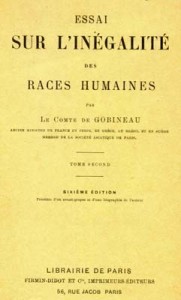 Wagner thought that Gobineau had demonstrated in this famous essay that “we should have no History of Man at all, had there been no movements, creations, and achievements of the White man,” and was taken with his pessimistic notion that Western society was doomed because miscegenation would inevitably lead to the degeneration of the white race. In his essay “Heroism and Christianity”, Wagner writes that:“We cannot withhold our acknowledgment that the human family consists of irremediably disparate races, whereof the noblest well might rule the more ignoble, yet never raise them to their level by commixture, but simply sink to theirs.” The Jews, however, offered a unique exception to this general rule:
Wagner thought that Gobineau had demonstrated in this famous essay that “we should have no History of Man at all, had there been no movements, creations, and achievements of the White man,” and was taken with his pessimistic notion that Western society was doomed because miscegenation would inevitably lead to the degeneration of the white race. In his essay “Heroism and Christianity”, Wagner writes that:“We cannot withhold our acknowledgment that the human family consists of irremediably disparate races, whereof the noblest well might rule the more ignoble, yet never raise them to their level by commixture, but simply sink to theirs.” The Jews, however, offered a unique exception to this general rule:
The Jew, on the contrary, is the most astounding instance of racial congruence ever offered by world history. Without a fatherland, a mother tongue midst every people’s land and tongue he finds himself again, in virtue of the unfailing instinct of his absolute and indelible idiosyncrasy: even commixture of blood does not hurt him; let Jew or Jewess intermarry with the most distinct of races, a Jew will always come to birth.
While accepting many of Gobineau’s basic premises, Wagner, in his 1881 essay about the German people entitled “Know Thyself” rejects the idea of complete Aryan superiority and writes about the “enormous disadvantage at which the German race … appears to stand against the Jewish.” Furthermore, when Gobineau stayed with the Wagners at Wahnfried for five weeks in 1881, their conversations were punctuated with frequent arguments. Cosima Wagner’s diary recounts one exchange in which Wagner “positively exploded in favor of Christianity as compared to racial theory.” Wagner proposed that a “true Christianity” could provide for the moral harmonization of all races, which could, in turn, help prevent the physical unification of the races, and thereby the degeneration of the White race through miscegenation:
Incomparably fewer in individual numbers than the lower races, the ruin of the White races may be referred to their having been obliged to mix with them; whereby, as remarked already, they suffered more from the loss of their purity than the others could gain by the ennobling of their blood. … To us Equality is only thinkable as based upon a universal moral concord, such as we can but deem true Christianity elect to bring about.
Wagner had first developed the idea of a revolutionary new Christianity in the opera text Jesus of Nazareth (1849), which depicted Jesus as redeeming man from the materialism of the “Roman world … and still more, of that [Jewish] world subject to the Romans. … I saw the modern world of the present day as a prey to the worthlessness akin to that which surrounded Jesus.” Wagner here drew heavily on Kant’s critique of Judaism. Enslaved to the Law, the Jews had rejected Jesus’s message of love; Jewish egoism and lovelessness had led Judas to betray him. The Jews had preferred “power, domination … [and] the loveless forces of property and law, symbolized by Judaism.” Wagner’s hope for the emergence of a “new Christianity” to act as a bulwark against miscegenation and the degeneration of the white race has not transpired, although some Jewish commentators see it as having being realized in the ideology and practice of National Socialism.
For Larry Solomon, in Richard Wagner “all the racist historical models from Luther to Fichte, Feuerbach, Gobineau, Hegel, Schopenhauer, and Chamberlain, come to full maturity.” Yet, despite the irate epithets directed at Wagner, most of his assertions are objectively true. The races are unequal intellectually and physically, and race mixing does lead (on average) to the cognitive decline of the more intelligent racial party to the admixture. Wagner’s racial views were mainstream opinions at the time he expressed them — not least among the leading Jewish intellectuals I cited in my review of Jews & Race — Writings on Identity and Difference 1880–1940.
Wagner’s views on the Jewish Question strongly paralleled those of Theodor Herzl. Both Wagner and Herzl saw the Jews as a distinct and foreign group in Europe. Herzl saw anti-Semitism as “an understandable reaction to Jewish defects” brought about by the Jewish persecution of gentiles. Jews had, he claimed, been educated by Judaism to be “leeches” and possessed “frightful financial power.” (p. 57) For Herzl, the Jews were a money worshipping people incapable of understanding any other motives than money. MacDonald notes in Separation and Its Discontents that Herzl argued that “a prime source of modern anti-Semitism was that emancipation had brought Jews into direct economic competition with the gentile middle classes. Anti-Semitism based on resource competition was rational.” Herzl “insisted that one could not expect a majority to ‘let itself be subjugated’ by formally scorned outsiders that they had just released from the ghetto.” (p. 54) Daniel Barenboim notes that “Wagner’s conclusion about the Jewish problem was not only verbally similar to Herzl’s” but that “both Wagner and Herzl favored the emigration of the German Jews.” Despite their convergence of opinion on the Jewish Question, Herzl avoided the opprobrium that was posthumously heaped on Wagner; intellectual consistency being the first casualty of Jewish ethnic warfare through the construction of culture.


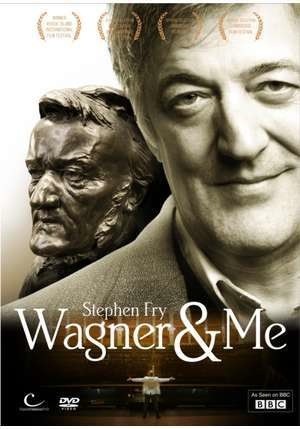
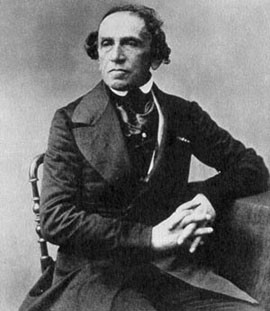
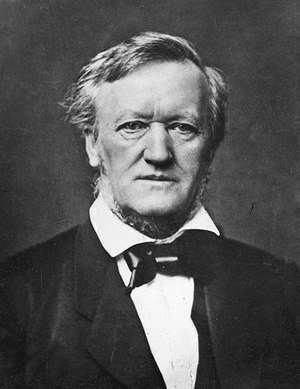
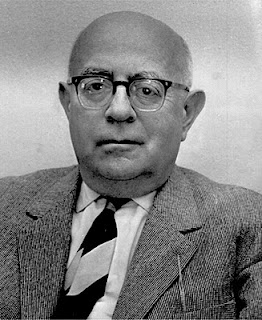





Comments are closed.